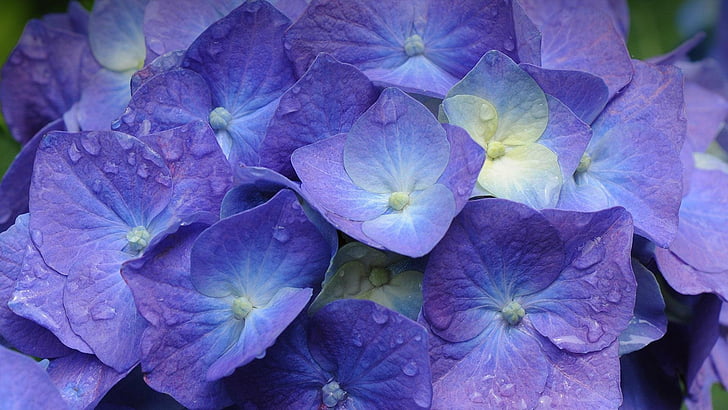The Flare Hydrangea: A Stunning Bloom That's Sure To
The Flare Hydrangea: A Stunning Bloom That's Sure to Turn Heads
The Flare Hydrangea is a truly stunning plant. With its tall, spires of bold red blooms, it's sure to turn heads in any garden. But this hydrangea is more than just a pretty face. It's also relatively easy to care for, making it a great choice for even novice gardeners.
In this blog post, we'll take a closer look at the Flare Hydrangea. We'll discuss its appearance, its growing requirements, and how to care for it. We'll also share some tips on how to get the most out of this beautiful plant.
Appearance
The Flare Hydrangea is a member of the panicle hydrangea family. These hydrangeas are known for their large, cone-shaped blooms. The Flare Hydrangea is no exception. Its blooms can reach up to 12 inches in length and are a vibrant red color.
The Flare Hydrangea's foliage is also quite attractive. The leaves are a deep green color and have a slightly serrated edge. As the season progresses, the leaves will often turn a reddish-purple color.
Growing Requirements
The Flare Hydrangea is a relatively easy plant to grow. It prefers full sun, but it can also tolerate partial shade. The soil should be well-drained and slightly acidic.
The Flare Hydrangea is a relatively drought-tolerant plant, but it will appreciate regular watering during the growing season. Fertilize the plant once a year in the spring with a balanced fertilizer.
Care Tips
The Flare Hydrangea is a relatively pest- and disease-free plant. However, it is susceptible to powdery mildew. If you notice powdery mildew on your plant, you can treat it with a fungicide.
The Flare Hydrangea is also a good choice for container gardening. If you're growing the plant in a container, make sure to choose a pot that is at least 18 inches in diameter.
Pruning
The Flare Hydrangea should be pruned in the early spring. Remove any dead, diseased, or damaged branches. You can also thin out the plant to improve air circulation.
Bloom Time
The Flare Hydrangea blooms in the summer. The blooms will last for several weeks.
Conclusion
The Flare Hydrangea is a stunning plant that is sure to add beauty to any garden. It's relatively easy to care for and is a good choice for both container gardening and in-ground planting. If you're looking for a beautiful and easy-care hydrangea, the Flare Hydrangea is a great option.
Are you looking for a stunning hydrangea that will add a touch of drama to your garden? If so, you need to check out the flare hydrangea! This gorgeous plant produces large, flamboyant blooms that emerge pure white and then turn bright red from the bottom up. The flare hydrangea is a relatively new variety, but it has quickly become a popular choice for gardeners all over the world.
If you're interested in learning more about the flare hydrangea, I recommend visiting . This website has a wealth of information about the plant, including its history, care requirements, and propagation methods. You can also find photos of the flare hydrangea in its various stages of bloom.
I hope this helps!
FAQ of flare hydrangea
1. What is a flare hydrangea?
A flare hydrangea is a type of panicle hydrangea that is known for its large, flamboyant blooms. The blooms typically emerge pure white and then turn bright red from the bottom up. Flare hydrangeas are relatively easy to care for and can be grown in a variety of climates.
2. How big does flare hydrangea get?
Flare hydrangeas typically grow 2 to 3 feet tall and wide. They can be pruned to be smaller or larger, depending on your preference.
3. Where does flare hydrangea grow best?
Flare hydrangeas prefer full sun to partial shade. They can be grown in a variety of soil types, but they do best in well-drained soil.
4. How do I care for a flare hydrangea?
Flare hydrangeas are relatively easy to care for. They need regular watering, especially during the summer months. They should also be fertilized once a year in the spring.
5. How do I deadhead a flare hydrangea?
To deadhead a flare hydrangea, simply cut off the spent blooms. This will encourage new blooms to form. You can deadhead your flare hydrangea in the fall or winter.
Image of flare hydrangea
5 different images of "flare hydrangea" from Pinterest:
- Image 1: A close-up of a single flare hydrangea bloom, showing the white petals and the red stamens.

- Image 2: A full plant of flare hydrangea, showing the large, conical blooms.

- Image 3: A group of flare hydrangea plants in bloom, against a backdrop of green foliage.

- Image 4: A flare hydrangea plant in bloom, with a butterfly perched on one of the blooms.

- Image 5: A vase of cut flare hydrangea blooms, arranged in a simple vase.

Post a Comment for "The Flare Hydrangea: A Stunning Bloom That's Sure To"